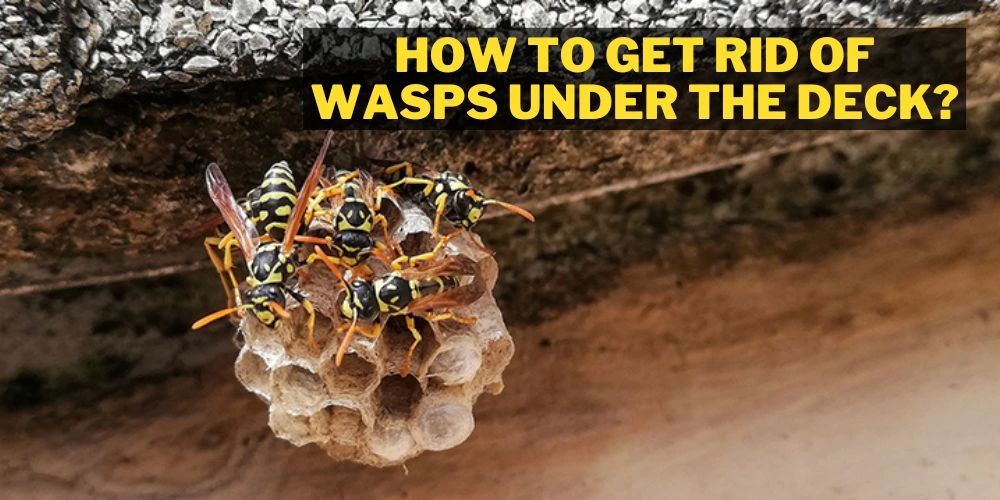As someone who takes great pride in maintaining a well-manicured lawn, the thought of frost damaging freshly cut grass is concerning. After all the hard work and effort put into achieving a lush green lawn, it would be devastating to see it damaged by something as seemingly harmless as frost. So, will frost damage freshly cut grass?
It may surprise you that grass can survive a light frost without damage. However, when the temperature drops below freezing and the frost becomes more severe, the moisture within the grass blades can freeze and cause damage to the plant’s cells. This can result in brown or yellow patches on your lawn that can take weeks or even months to recover from.
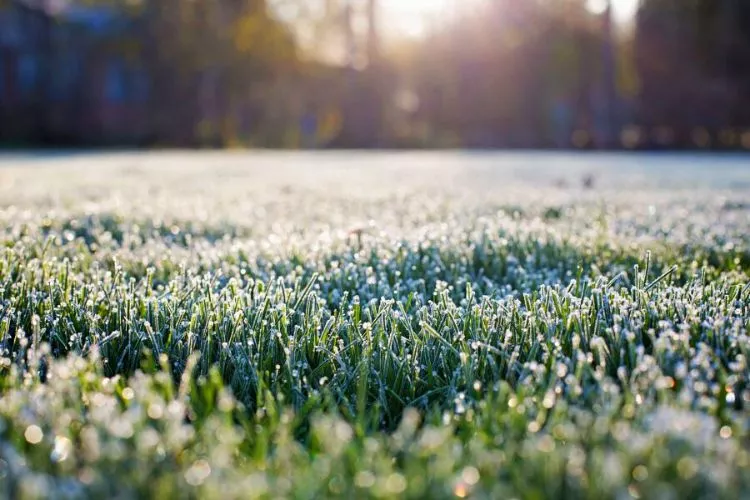
Will frost damage freshly cut grass?
Yes, frost can damage freshly cut grass, particularly when the temperature drops below freezing.
Grass is susceptible to damage from frost because it is a living organism with delicate cell structures that extreme temperature changes can easily disrupt. Freshly cut grass is particularly vulnerable as the sharp edges left by the lawn mower can create openings for frost to enter and damage the grass blades.
To protect your lawn from frost damage, avoiding cutting your grass too short before the onset of cold weather is important. Longer grass blades provide more insulation against frost and can help to protect the plant’s cells. It’s also a good idea to limit foot traffic on your lawn during frosty conditions, as the weight of footsteps can damage the fragile grass blades.
Research conducted by the University of Illinois Extension has shown that frost can harm freshly cut grass. When the temperature drops below freezing, the moisture within the grass blades can freeze, causing damage to the plant’s cells.
Types of grass and their tolerance to frost
By understanding which types of grass are best suited for colder climates and have a higher tolerance to frost, you can better prepare and maintain a healthy lawn year-round. Knowing the characteristics of your grass can help you take the necessary precautions to protect it from frost damage and ensure its longevity.
Cool-season grasses
Cool-season grasses are a type of grass that thrives in cooler temperatures and are typically found in northern regions with moderate to cool climates. These grasses are so-called because they grow actively during the cool temperatures of spring and fall, becoming dormant during the hot summer months.
Common cool-season grasses include Kentucky bluegrass, perennial ryegrass, tall fescue, and fine fescue. These grasses are often found in areas such as the northern United States, Canada, and Europe. Cool-season grasses are known for tolerating cold temperatures and frost, making them an ideal choice for those living in areas with harsh winters.
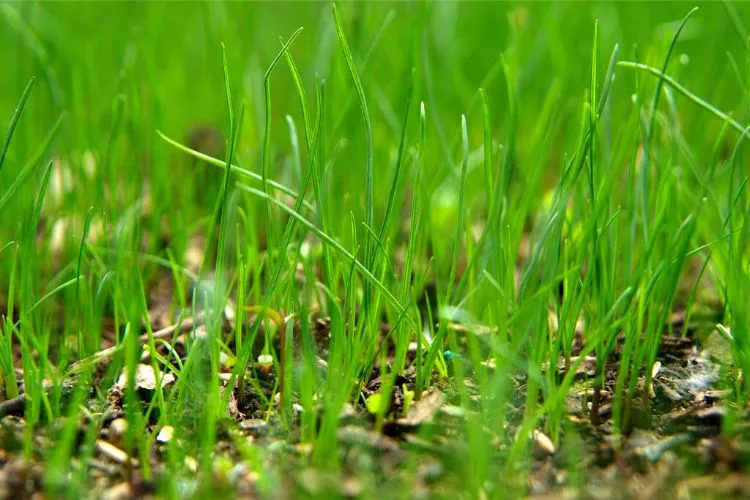
These grasses are popular for homeowners in areas with cooler climates, such as the northern United States, Canada, and Europe. There are several types of cool-season grasses, each with unique characteristics and growing requirements.
Kentucky bluegrass is a popular choice for cool-season grasses, known for its fine texture and dense growth pattern. It’s a durable grass that can tolerate heavy foot traffic and is commonly used in residential lawns, golf courses, and parks.
Ryegrass is another cool-season grass that is quick to germinate and grow, making it an excellent choice for overseeding a warm-season lawn during the fall. Its coarse texture is commonly used in high-traffic areas such as athletic fields and parks.
Fescue is a cool-season grass known for its adaptability to various soil types and growing conditions. It has several varieties, including fine fescue, tall fescue, and creeping red fescue. Fescue grasses have a fine texture and are commonly used in residential lawns, parks, and golf courses.
Warm-season grasses
Warm-season grasses are a type of grass that grows best in warm climates with long, hot summers. They are often found in regions with hot, humid summers and mild winters, such as the southern United States, the Caribbean, and South America.
Warm-season grasses thrive in temperatures between 80-95 degrees Fahrenheit and typically grow actively during the summer while becoming dormant during cooler seasons. Popular types of warm-season grasses include Bermuda grass, St. Augustine grass, centipede grass, and zoysia grass.
These grasses are known for their tolerance to drought, heat, and heavy foot traffic, making them ideal for lawns, sports fields, and golf courses in warmer regions.
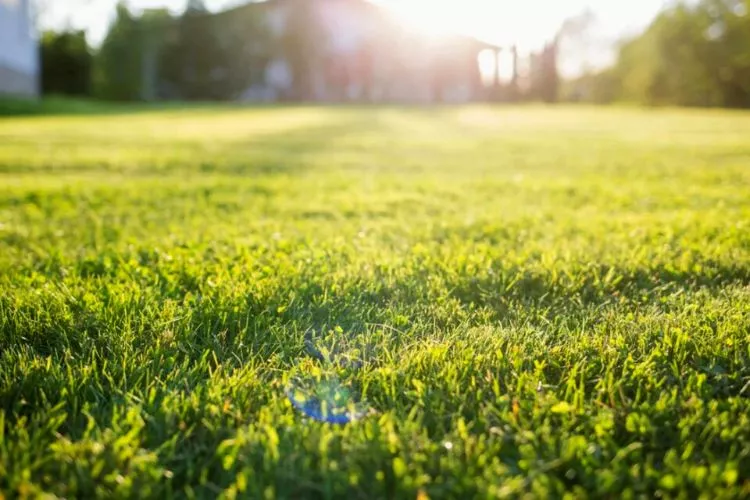
There are several types of warm-season grasses, each with unique characteristics and growing requirements. Bermuda grass is a popular choice for warm-season grasses, known for its drought tolerance, heat tolerance, and fast growth. It has a fine texture and is commonly used in residential lawns, sports fields, and golf courses.
Zoysia grass is another warm-season grass known for its drought and heat tolerance. It has a dense growth pattern and is commonly used in residential lawns, parks, and golf courses. Zoysia grass has a medium texture and a vibrant green color.
St. Augustine grass is a warm-season grass known for its shade tolerance and ability to grow in various soil types. It has a coarse texture and is commonly used in residential lawns, parks, and golf courses. St. Augustine grass has a blue-green color and is susceptible to pests and disease.
How long after frost can you cut grass?
It’s generally recommended to wait until the frost has melted and the grass blades have dried out before mowing the lawn. This can take anywhere from a few hours to a full day, depending on the severity of the frost and the weather conditions. Mowing frozen grass can damage the blades and result in brown patches on the lawn.
Additionally, wet grass blades are more susceptible to damage from the mower blades, resulting in a less even cut. To avoid causing damage to the grass, it’s best to wait until the frost has melted and the grass has had a chance to dry out before mowing.
When should you not cut grass?
There are certain times when you should avoid cutting your grass to prevent damage and promote healthy growth. It’s best to avoid mowing the lawn during extreme heat or drought, as this can stress the grass and cause it to go dormant.
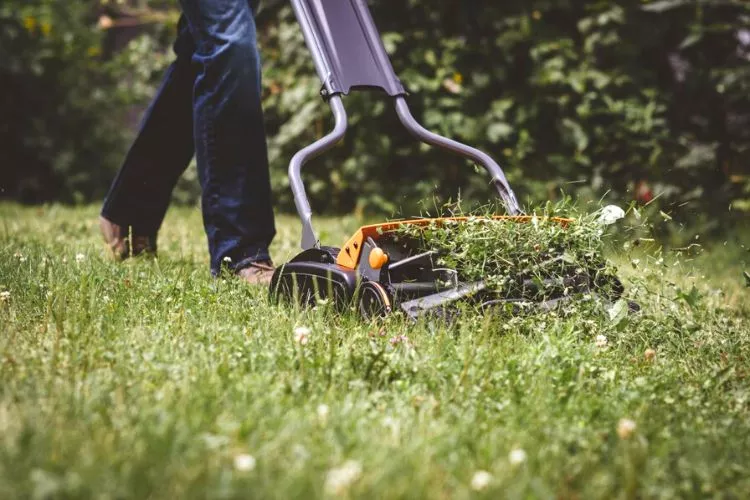
Additionally, it’s recommended to avoid mowing the lawn immediately after it has rained, as wet grass blades can become matted and clump together, resulting in an uneven cut. It’s also best to avoid mowing the lawn when the grass is too long or too short, as this can damage the blades and result in brown patches on the lawn. It’s important to keep these factors in mind to ensure that your lawn remains healthy and vibrant.
Other Articles About Maintaining Lawn Grass: Barriers To Keep Cars Off Grass | What To Put Under Inflatable Pool On Grass | How To Turn Yellow Grass Green
Frequently Asked Questions (FAQs)
What temperature is too cold to mow grass?
Mowing the grass when temperatures are below 40°F can cause damage to the blades and lead to brown patches on the lawn, so it’s best to wait until temperatures rise to mow the lawn.
What happens if you cut your grass too short before winter?
Cutting grass too short before winter can expose the roots to cold temperatures and cause damage to the grass, resulting in brown patches on the lawn come spring. It’s recommended to leave the grass longer in the fall to protect it during the winter months.
Is it OK to cut grass in November?
It’s generally okay to cut grass in November as long as the grass is not too wet or too long. However, it’s important to remember that grass growth slows down during the fall and winter months, so it may not be necessary to mow the lawn as frequently.
Conclusion:
In conclusion to summarize the answer to the question “will frost damage freshly cut grass?”, I can say frost can damage freshly cut grass, and it’s important to take precautions to protect your lawn during periods of cold weather. Cool-season grasses are generally more tolerant to frost than warm-season grasses, but all types of grass can be affected if exposed to extreme temperatures.
To avoid damage, it’s recommended to wait until the frost has melted and the grass blades have dried out before mowing the lawn. Additionally, it’s important to avoid cutting the grass too short before winter and take other measures, such as fertilization and aeration, to promote healthy growth and protect the grass during winter. By following these tips, you can help ensure your lawn remains healthy and vibrant year-round.


